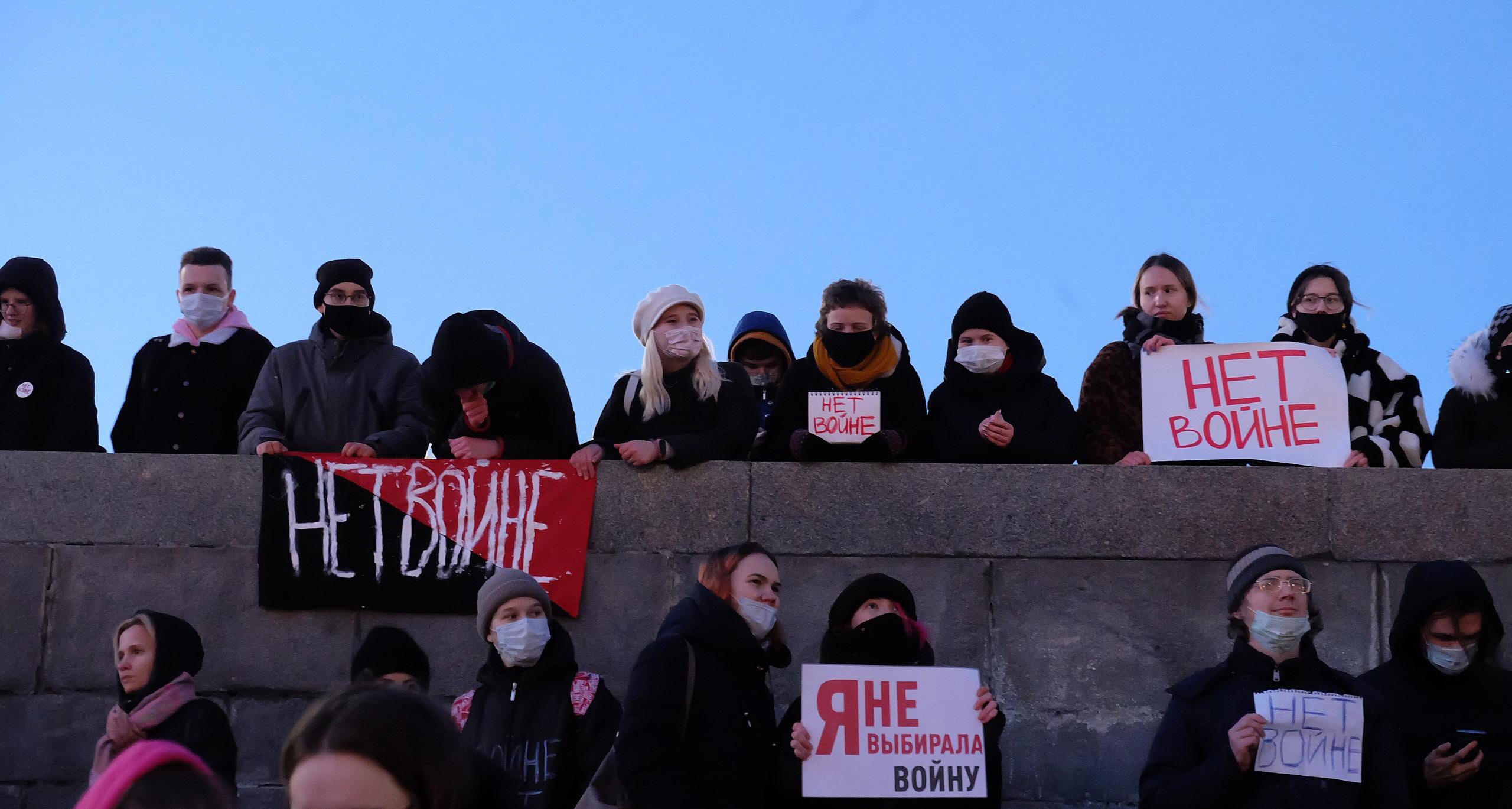KEY TAKEAWAYS
● If the Russian army collapses in defeat in Ukraine, this could be the catalyst for political violence seeking regime or leadership change to extract revenge for humiliation on the battlefield and a ruined economy at home. However, as the number of armed groups in Russia grows (regular military, security services, private military companies, ethnic-nationalist military units, etc.), political violence initially focused on the Kremlin could unleash a broader struggle as each group vies for power against the other.
● If Russia’s central government, with a defeated army and weakened security services, is convulsed in an armed power struggle, this situation could motivate some ethnic republics within Russia to take advantage of this opportunity and attempt to secede, which would plunge the state into further chaos.
● Even if a defeat in Ukraine does not lead to disintegration within Russia itself, the former Soviet republics in what Russia considers its “near abroad” will continue to spin away from Moscow’s sphere of influence and reorient themselves towards other historic powers in their regions. This will be especially true in Central Asia and the Caucasus where Chinese and Turkish power has risen over the past several decades while Russia’s has declined. In Russia’s far east, the disparity between China’s and Russia’s relative strengths—military, economic, and demographic—is turning the balance of power in Beijing’s favor.
Will Russia survive until 2084? Readers may recognize the query as an allusion to Andrei Amalrik’s historic 1969 essay, “Will the Soviet Union Survive Until 1984?,” which itself was an allusion to Orwell’s famed novel. As with Amalrik’s question about the Soviet Union’s future, this query focuses on Russia’s future foreign relations and territorial integrity. It envisions that a Russian defeat in Ukraine is likely to initiate chaos in Russia, equal to or greater than that experienced when the Soviet Union fell. This will exacerbate an on-going process where China, Turkey, and the European Union and NATO are replacing Russia as the gravitational centers of influence for its so-called “near abroad” in Eastern Europe, the Caucasus, and Central Asia. Domestic unrest may also serve as a catalyst for disintegration of parts of Russia similar to the dissolution of the Soviet Union. Though Russia is a millennium-old civilization and cannot dissolve as the ideologically based Soviet Union did, as a multinational state it can become smaller. As a result of a combination of a military defeat, domestic political chaos, economic malaise, and continuing demographic decline, Russia’s borders could implode to the extent they resemble those at the close of the 16th century, known in Russia as the Time of Troubles.
I
The currently raging Russian-Ukrainian war contains many unknowns—from the possible use of nuclear weapons to how the conflict finally ends. What we do know now is that the war has been a military disaster for Russia. Throughout Russian history, military disasters are usually followed by revolutions and/or a leadership change. There is no reason to believe that this war will be an exception. To cite just one example, Russia’s revolution of February 1917 was sparked by a combination of economic deprivation and military defeatism. There are strong parallels between that event and Russia’s current situation.
Early 2014 was likely the high-water mark of Vladimir Putin’s rule. The gross domestic product from the year before stood at $2.3 trillion, the Winter Olympics in Sochi had concluded successfully, and Putin’s illegal annexation of Crimea skyrocketed his approval ratings.
However, Crimea proved to be a poisoned chalice. Its annexation and Russia’s intervention into Ukraine’s Donetsk and Luhansk oblasts brought international sanctions, which—coupled with declining oil prices—decreased Russia’s gross domestic product by a third by 2020.1
As a result, Russia’s standard of living declined precipitously with a sharp decline in personal disposable incomes, a return of Boris Yeltsin-era inflation, and a scarcity of basic food items.2 Other factors such as endemic corruption, capital flight, and a paltry level of foreign direct investment prior to the war added to the economic morass that already existed prior to Russia’s second invasion of Ukraine in February 2022.3
Usually, wartime economies must choose between guns and butter; Russia’s economy is now deteriorating to the point that it will be difficult to provide either. Since Putin reinvaded Ukraine in February 2022, more stringent sanctions have further diminished Russia’s economy, especially its militaryindustrial sector. Sanctions on the export of dual use technology have caused serious
FOREIGN POLICY RESEARCH INSTITUTE 6
Usually, wartime economies must choose between guns and butter; Russia’s economy is now deteriorating to the point that it will be difficult to provide either.
disruptions in defense industries producing precision guided munitions, combat aircraft, and armored vehicles.4 Similar damage has been done to Russia’s energy exports, the primary source of income for the government. Russia has lost its gas market in Europe and next year will lose most of its oil market, markets which cannot be replaced by demand from Asia due to the location of the majority of Russia’s oil and gas fields and the primarily western orientation of most of its hydrocarbon pipeline systems. Russia’s domestic retail trade has largely collapsed, it cannot import a wide range of Western goods from sophisticated drilling equipment to tap new energy reserves under the Arctic Ocean to microchip technology necessary not just for advanced weapons but also for a modern domestic economy.5
Economic weakness at home is mirrored by military dysfunction on the battlefield. Russian manpower losses now exceed
100,000.6 That figure exceeds the approximately 48,000 casualties the Soviet Union (with twice Russia's population) suffered in Afghanistan over a ten-year period in the 1980s.7 These losses are near catastrophic considering the number of regular Russian troops who invaded Ukraine in February was perhaps 190,000.8
Casualty figures must also be considered in the context of the relatively small size of Russia’s ground forces. At the beginning of the war, Russia’s regular army numbered 280,000 soldiers with approximately 20,000 organized reserves. The airborne forces had approximately 40,000 paratroopers. Approximately 35,000 naval infantrymen were attached to Russia’s four fleets and one flotilla and approximately 4,000 Spetsnaz commandos were in its Special Operations Command. To this number could be added approximately 40,000 militiamen in the Donetsk and Luhansk People’s
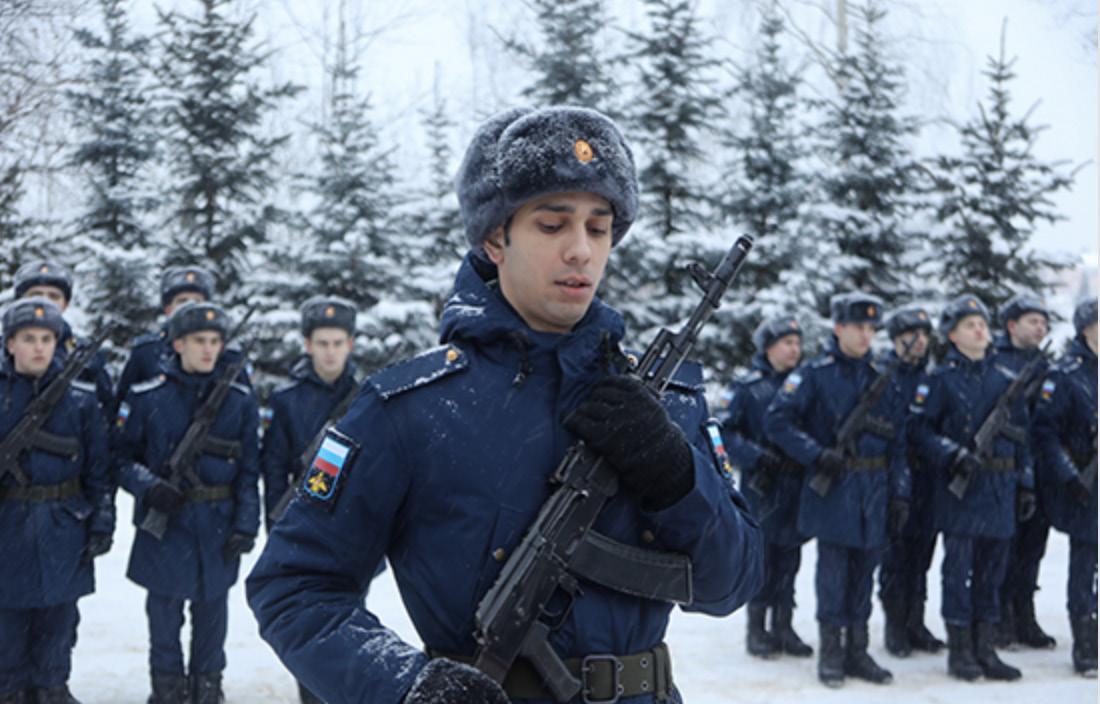
WILL RUSSIA SURVIVE TO 2084? 7
Military personnel called up for service in fall 2022 take the military oath in the subdivision of the Tver formation of Military Transport Aviation Command. (function.mil.ru)
 Fixing of Ukrainian flag on Snake Island, July 7, 2022. (State Border Guard Service of Ukraine/Facebook)
Fixing of Ukrainian flag on Snake Island, July 7, 2022. (State Border Guard Service of Ukraine/Facebook)
Republic militias. Even this aggregate of slightly more than 400,000 men must be treated with skepticism since corrupt commanders inflated troop numbers, and many units at the start of the war were greatly understrength to the point that tanks sometimes went into battle with only one or two crew members.
Those initial ground forces, whatever their size, suffered substantial losses from Kyiv to Mariupol between February and April. However, their greatest calvary was in the Donbas where horrific casualties were traded to capture a few hundred square kilometers of strategically insignificant territory. Putin destroyed much of his army in this fighting and must now hold territorial gains with the remnants of his regular army and a growing number of ill-trained (or even untrained), unmotivated draftees. While the dead and wounded may be replaced, Russian military problems of leadership, logistics, and morale remain. Armies of poorly equipped, press-ganged soldiers, led by corrupt officers, and ill-supplied rarely, if ever, win wars.
They do, however, often mutiny.
The factors described above resemble what led to the Russian army mutiny in 1917, minus the Bolshevik agitation. The military scenes in David Lean’s classic movie Doctor Zhivago provide an insight into what such an army looks like and how it can disintegrate.
To the destabilizing combination of a moribund economy and a tottering military situation must be added tensions between ruling elites and disillusionment among the regime’s propagandists. Finger pointing has begun between Russia’s regular military commanders and its “irregular” military commanders, Yevgeny Prigozhin and Ramzan Kadyrov, with the later accusing specific generals of military incompetence and the Ministry of Defense mounting public relations campaigns to show senior generals in control of the situation. There are also reports of finger pointing and turf fights between Russia’s internal security (FSB) and military intelligence (GRU) services
over responsibility for Ukrainian operations.9 In Russia, the surface ripples of intra-elite conflicts hint at deeper, unseen currents dividing the government over the war. Russia’s public opinion, meant to be shaped by state propagandists, may also reflect such splits to the detriment of wartime national unity.
Russian television, the main medium to influence public opinion, may actually be reinforcing defeatism and disunity in its messages and messengers. Russian state broadcasting has poured fuel on the fire of public despair after Ukraine’s fall counteroffensive by echoing calls for senior officers be executed or commit suicide for the poor conduct of the war and searching for traitors to blame for recent defeats. These broadcasts seem to be a modern version of the famous speech by Duma member Pavel Miliukov in 1916. While criticizing the Russian government’s conduct of another war, Miliukov asked after each denunciation of government ineptness, “Is this stupidity, or is it treason?”, and answered his own question by declaring, “Choose either one, the consequences are the same.”10
Highlighting government incompetence or supposed treason in a search for scapegoats may be counterproductive. Like Miliukov’s speech, which helped set in motion events contributing to the revolution of February
WILL RUSSIA SURVIVE TO 2084? 9
Russian television, the main medium to influence public opinion, may actually be reinforcing defeatism and disunity in its messages and messengers.
1917, the nightly airing of grievances by commentators such as Vladimir Solovyov and Margarita Simonyan may undermine the legitimacy of the regime that state media is designed to protect. It has certainly not helped “sell” Russia’s mobilization since twice the number of young men have fled the country as have reported for duty.11 Economic hardships, military defeats, and growing pessimism shared by state and social media is crumbling the regime’s façade of invulnerability.
II
In the center of this military, economic, and informational cauldron sits Putin, who has ruled Russia, directly or indirectly, for over two decades, the longest period of rule since Stalin. However, the political system he has created is for today and not for tomorrow. In other words, it is strongest in those features to maintain power and weakest in those features to transfer power. This is not unusual, as over 250 years of Russian history have shown that leadership transitions are dangerous, fraught with assassinations, coups, attempted coups, and “curious” medical events.
In 1762, a military coup overthrew and later murdered Tsar Peter III in favor of his wife, who became Catherine the Great. Catherine’s son, Paul I, was murdered by two army officers during a palace revolt, which placed Alexander I on the throne in 1801. Upon Alexander I’s death, the transfer of monarchical power to his younger brother, Nicholas I, was almost overturned by an attempted military coup during the Decembrist Uprising in 1825. Nicholas I died of what some characterize as a passive suicide by refusing treatment for pneumonia in the wake of the military disasters of the Crimean War in 1855. His son, Alexander II, was assassinated by anarchist-terrorists in 1881. Nicholas II barely weathered the revolution of 1905 after Russia’s defeat in the Russo-Japanese war. He abdicated after
the revolution of February 1917 and was murdered with his family by the Bolsheviks in 1918 during the Russian Civil War. Lenin died in 1924 from complications from a stroke, although conspiracy theories hold that Stalin poisoned him to speed up succession. Stalin died of a stroke in 1953; though some speculate that he was poisoned by Lavrentiy Beria, the Soviet secret police chief.12
Beria was arrested and executed later that year and the ultimate winner of the postStalin power struggle, Nikita Khrushchev, was overthrown in a 1964 palace coup orchestrated by Brezhnev and supported by the military and KGB. The last leader of the Soviet Union, Mikhail Gorbachev, was almost deposed by an attempted military coup in 1991. During that coup, a young captain, Sergey Surovikin, commanded a tank company that killed three demonstrators, a crime for which he was arrested but never convicted.13 Today, General Sergey Surovikin commands all Russian forces in Ukraine.
Could such events happen again?
Putin’s term ends in 2024 and, per the Russian constitution, he can run again for two more six-year terms. The constitution stipulates that a president can leave office via resignation, impeachment or a, “persistent inability for health reasons to carry out the powers invested in him.” It does not explain how this determination is made.
FOREIGN POLICY RESEARCH INSTITUTE 10
If Putin suddenly dies of natural causes, the Kremlin would have to decide quickly who will rule the regime and mobilize state resources during wartime to “manage the democracy” via a new election.
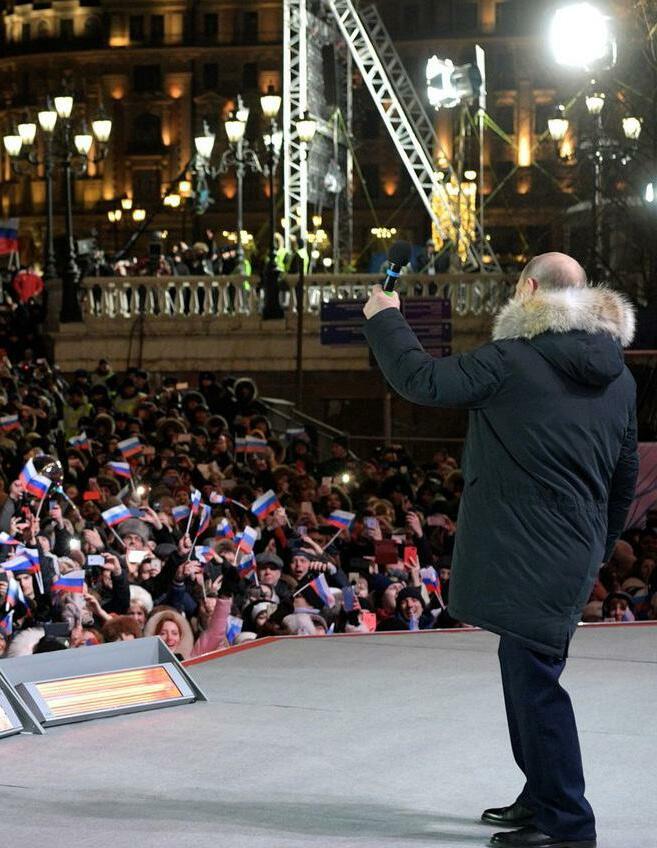 Speech by Russian President Vladimir Putin at a rally in Manezhnaya square after winning the election in 2018. (kremlin.ru)
Speech by Russian President Vladimir Putin at a rally in Manezhnaya square after winning the election in 2018. (kremlin.ru)
Upon removal of a president, the prime minister becomes acting president and presidential elections must take place within 90 days.
However, in Putin’s Russia, the constitution is less an ironclad framework for governance and more often a Potemkin-like structure to provide a facade of legitimacy to unilateral Kremlin actions. Under Putin, there has also never been a legitimately contested election, given that state resources have always been at his disposal to ensure victory. If Putin suddenly dies of natural causes, the Kremlin would have to decide quickly who will rule the regime and mobilize state resources during wartime to “manage the democracy” via a new election.
happen due to the war against Ukraine.
Few Kremlin factions were consulted by Putin on invading Ukraine and most were surprised by it.15 Those who offered even the slightest concerns before the war were humiliated by Putin on state television.16 Afterwards, both elites and general society suffered the economic consequences of international sanctions. The military has suffered defeats from Kyiv to Kharkiv to Kherson. Should Ukraine recover Crimea, it will be Russia’s greatest military defeat since World War I.
Who would be the candidate to take this job? More importantly, who would want it? Putin, like most dictators, has created a system where there is no clear successor but many groups of conflicting rivals. The Russian saying “the Kremlin has many towers” is meant to describe the constant factionalism of government politics. Putin’s balancing of factional conflicts and appetites, usually financial, provide him with both power over these groups and protection from them. Balancing factional financial interests continues even in wartime and is serious business if the recent murders of senior Russian energy executives is anything to go by.14 Putin’s successor would have to assure Kremlin elites he could fulfill the same mission. If there is a consensus candidate who could satisfy the various factions— military, security and intelligence, gas and oil, financial, etc.—that their positions, wealth, and families were secure, this would be very stabilizing for Russia. It is also unlikely to
Defeat will have many groups demanding accountability: military officers deflecting blame; average soldiers seeking retribution for their suffering; and families who have lost loved ones or now must care for their wounded. Russian society will be angry at a lost war and ruined economy. If victory has a hundred fathers and defeat is an orphan, that orphan’s name will be Vladimir Vladimirovich Putin. Therefore, Putin could face either public uprisings seeking regime change or a palace coup attempting to appease public outrage with leadership change vice regime change, so that Kremlin elites do not lose their wealth and security. Could either succeed?
Putin has partly “coup-proofed” his regime by having no clear successor and using divide and rule tactics among Kremlin elites.17 Like a medieval lord, Putin also has multiple armed retainers for just such occasions. In 2016, Putin separated paramilitary forces from the Ministry of Internal Affairs to create the National Guard (Rosgvardia) commanded by the ultra-loyal Viktor Zolotov. Among other functions, Rosgvardia serves as a counterbalance to any palace intrigues from the FSB and Ministry of Internal Affairs beyond the capabilities of Putin’s bodyguards in the Federal Protective Service. During a coup, Putin could also turn for support to Prigozhin’s private military company Wagner and Chechen troops loyal to Kadyrov. However, their security may be illusory. Rosgvardia has suffered as much in combat
FOREIGN POLICY RESEARCH INSTITUTE 12
Who would be the candidate to take this job? More importantly, who would want it?
as the regular army. Kadyrov may play a double game waiting until the military is weakened further and then strike for power with what could be Russia’s largest intact military force. The regular military, as noted, has scores to settle with the Kremlin as might factions in the FSB scapegoated for their failures in Ukraine. Other forces— armed, irregular, and illegal—may join in antigovernment actions for their own benefit or revenge. Beyond Russia’s established organized criminal gangs, new gangs could arise centered on disgruntled former soldiers and mercenary units recruited directly from prison. One group of dissatisfied soldiers has already deserted with their weapons from Kherson into Crimea.18 What happens to domestic order if this is magnified a thousand-fold by the collapse of the Russian army?
Even if a coup removes Putin from power, would its leader or leaders be able to balance the competing factions, including the armed ones, as Putin once did? There is no promise that other armed elements would accept the legitimacy of a coup and not try to seize power themselves. If Putin survives a coup attempt and rallies supporters, what then of the loyalties of the various armed groups in Russia? It could be a short step from coup to civil war with various factions battling across Russia. Indeed, never before has Russia been awash in so many armed units, (military, paramilitary, police, private) as today. Major domestic disorder could unravel parts of Russia, specifically its ethnic republics.
III
In 1991, when all Soviet Socialist Republics quit the Soviet Union, they left behind twenty-one non-Slavic autonomous republics in Russia, each with their own constitution, capital, and national language. The Chechen autonomous republic tried and failed to secede from Russia after two bloody wars. This stopped other ethnic republics from trying to follow its example. If a breakdown in public order, even civil war, occurs in Russia after a defeat in Ukraine, might Chechnya and other republics be motivated to try again?
The primary motivation for independence movements is nationalism, the belief that a distinct people should have their own sovereign nation-state. Nationalism remains strong among Russia’s many ethnic groups and is visible from the Chechen wars to regular skirmishes between autonomous republics and Moscow over education, national languages, the extent of selfrule, and control over indigenous natural resources. The war in Ukraine has led to protests in many autonomous republics over mobilization and high casualties among nonethnic Russians.19
However motivated, ethnic republics are unlikely to arise without the confidence they could survive economically and not be crushed by Moscow. Geographically, seven north Caucasus republics with approximately seven million people and energy resources of oil, gas, and coal, have borders contiguous to Georgia and/or Azerbaijan, and another republic, Kalmykia, is contiguous to this grouping. Altai, Tuva (formerly independent of the Soviet Union till 1944), and Buryatia are contiguous with Mongolia, and Khakassia is contiguous with them. A constellation of contiguous autonomous republics in Russia’s Volga Federal District, Mordovia, Chuvashia, Maria El, Tatarstan, Udmurtia, and Bashkortostan, has no access to a foreign border (although the distance from Bashkortostan’s southern border to Kazakhstan is approximately fifty miles) but together has a population of more
WILL RUSSIA SURVIVE TO 2084? 13
Putin has partly “coupproofed” his regime by having no clear successor and using divide and rule tactics among Kremlin elites.
 Working meeting of Russian President Vladimir Putin with the Head of the Chechen Republic Ramzan Kadyrov in 2018. (kremlin.ru)
Working meeting of Russian President Vladimir Putin with the Head of the Chechen Republic Ramzan Kadyrov in 2018. (kremlin.ru)
than twelve million people.20 Tatarstan and Bashkortostan have oil and gas reserves, are rich in ferrous and non-ferrous metals, and Tatarstan is heavily industrialized. Therefore, many republics—alone, in federations, or confederations—could access the world economy with the industrial potential and/or natural resources to support their independence.
As has happened before, achieving independence would depend greatly on the level of chaos in Moscow and its will and ability to restore order. In December 1989, a young KGB officer in East Germany begged his superiors for guidance on what to do after the Berlin Wall fell. “There are no orders from Moscow,” he was told, “Moscow is silent.” The young officer was Vladimir Putin. If Moscow is ever silent again, some ethnic republics could reach for independence. Chechnya and Tatarstan already have governments-in-exile. If Chechnya tries to secede again and is successful, it will be an example for others. While Kadyrov focuses on Ukraine and Moscow, Chechen rebels, inside and outside Russia, continue their struggle.21 Kadyrov could face the same danger as Putin if his forces are decimated in Ukraine and the people want retribution for a lost war. Many Chechens will also want revenge for his serving as Russia’s brutal Quisling. The possibility of breakaway republics is not a theoretical point for Moscow, which has already accused the United States of fomenting ethnic separatism to bring down Russia just like the Soviet Union.22 Moscow understands that it will be hard to reassert power in restive republics with a wrecked army and weakened security services.
IV
While the war in Ukraine might not lead to autonomous republics breaking free from Russia, the Kremlin is already losing influence in the former Soviet republics in the Caucasus and Central Asia. Russia has withdrawn most of its men and equipment from far east garrisons and bases providing
security in Tajikistan, Armenia, South Ossetia, and Abkhazia, to support the war. Like Rome’s legions departing Hadrian’s Wall in the fourth century, they are needed closer to the empire’s center.
Russia’s military withdrawals have already upended regional geopolitics. In June 2022, Kazakhstan’s President Kassym-Jomart Tokayev, speaking next to Putin at the St. Petersburg Economic Conference, announced that Kazakhstan neither supported the war with Ukraine nor recognized the Donetsk and Luhansk separatist enclaves. At a Commonwealth of Independent States summit in October 2022, President Emomali Rahmon of Tajikistan settled old colonial scores with Russia by publicly admonishing Putin about Russia’s lack of respect for his country. These strong words echoed even stronger actions in the former Soviet republics— including border clashes between Kyrgyzstan and Tajikistan—and between Azerbaijan and Armenia that included Azerbaijan seizing more territory in NagornoKarabakh. Where once Russian diplomats and soldiers would have quickly moved in, local leaders no longer believe that protection from their threats resides only in Moscow.
WILL RUSSIA SURVIVE TO 2084? 15
While the war in Ukraine might not lead to autonomous republics breaking free from Russia, the Kremlin is already losing influence in the former Soviet republics in the Caucasus and Central Asia.
Let us consider the October 2022 meeting of the Shanghai Cooperation Organization in Samarkand, Uzbekistan. The dominant figures at that meeting were President Xi Jinping of China and Turkish President Recep Tayyip Erdogan, with Putin relegated to being either a supplicant for aid or a whipping boy for his war in Ukraine. This dramatic shift in power was highlighted a few days before the Shanghai Cooperation Organization meeting when Xi visited Kazakhstan and spoke about its territorial integrity, which Russian pundits, lawmakers, and even Putin in 2014, have threatened.23 Xi, in a direct warning to Russia, stated that “No matter how the international situation changes, China will always support Kazakhstan in maintaining its national independence, sovereignty and territorial integrity.”24 With those twenty-one words, Xi signaled that China was now an arbiter of Central Asian security issues and had the power to back up its interests. Similarly, Turkey’s help to Azerbaijan to defeat Russiasupported Armenia made it an arbiter of South Caucasus security issues. The presence of Xi and Erdogan in Samarkand was the ceremonial recognition of this reality and that Russia’s unrestricted hegemony in its near abroad was over.
China’s assertion of its security interests in Central Asia was a humiliation to Russia. However, Moscow must wonder if Beijing will be satisfied with hegemony or if it has greater ambitions based on a Sino-Russian history replete with territorial conflicts?
For two centuries, China parried Russian attempts to reach the Amur River valley until the balance of power between the two empires changed, and the 1858 Treaty of Aigun and the 1860 Convention of Beijing recognized Russian control over the left bank of the Amur and the land known as the Maritime Province.25 Territorial conflicts continued, usually at China’s expense, with Russia’s coercion of China in 1898 to lease Port Arthur, Russia’s role in suppressing the Boxer Rebellion, the 1929 Sino-Soviet conflict over the Chinese Eastern Railway, the 1934 Soviet incursion into Xinjiang to
support a separatist warlord, and the SinoSoviet split precipitating the 1969 border clashes.26
Added to this history is the reality that Chinese Communist Party rule is now legitimized by ultra-nationalism, which emphasizes regaining lands lost during the “century of humiliation,” vice MarxistLeninism. While the current emphasis is on Taiwan, even in Mao’s time, Beijing argued that the “unequal treaties” with the Russian Empire that forced it to cede almost a million square miles of territory needed renegotiation—a demand Moscow rejected.27 Could this issue rise again? What if China is rebuffed in a war over Taiwan and turns its attention north to save face? What if it conquers Taiwan and then decides to undo the last of the “unequal treaties?” Could the real 21st century Thucydides Trap (of an emerging power threatening to replace an established great power) be a conflict between Russia and China over Siberian resources instead of conflict between China and the United States over Pacific hegemony, or possibly both?
If
If Russia faces a revanchist China, it will find itself hamstrung by demographic and economic weaknesses. While China’s population will gray into the 21st century as a result of its previous one-child policy, it will still hold a 10:1 population advantage over Russia. Russia’s declining population is a strategic weakness, but so is where that population is located—or not located. The population of Russia’s Far Eastern Federal District is approximately eight million, or less than 6 percent of Russia’s total population.28 This is a near demographic vacuum next
FOREIGN POLICY RESEARCH INSTITUTE 16
Russia faces a revanchist China, it will find itself hamstrung by demographic and economic weaknesses.
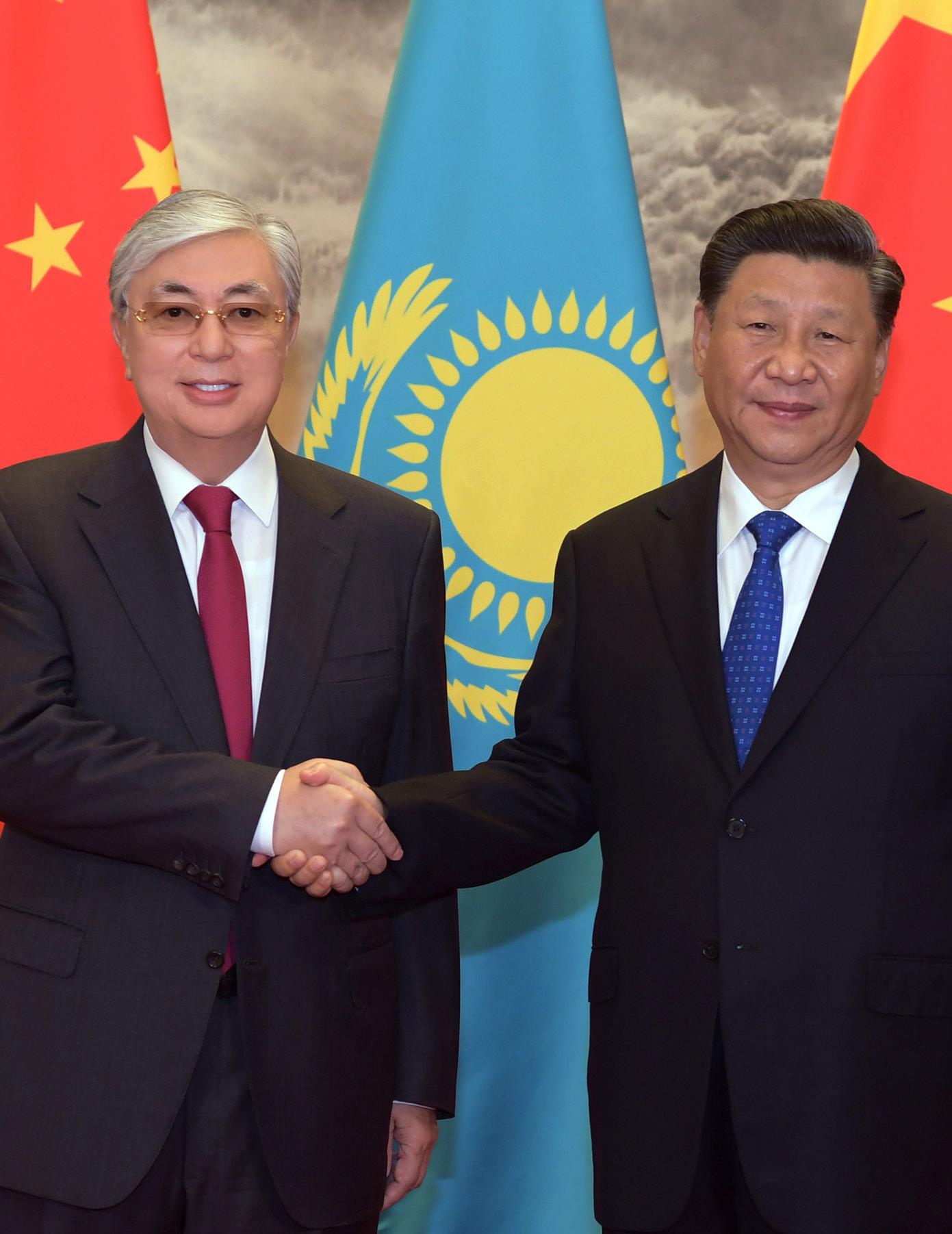 President of Kazakhstan Kassym-Jomart Tokayev held talks with Chinese President XI Jinping in 2019. (akorda.kz)
President of Kazakhstan Kassym-Jomart Tokayev held talks with Chinese President XI Jinping in 2019. (akorda.kz)
to China, an enormous demographic mass. Essentially, a geopolitical experiment is underway to determine how few Russians can live in this region and have it remain Russian territory.
Added to the national security challenges of demography is the huge disparity between Russian and Chinese economic capability. In 2021, China had the world’s second largest economy and Russia the world’s eleventh.29 Estimates of Russia’s 2022 gross domestic product decline due to the war in Ukraine range from single to double digits. Whatever the outcome, Russia’s gross domestic product will decline until sanctions are lifted. Even then, it cannot recover anytime soon to match the Chinese economic might giving Beijing a conventional military advantage over Moscow.
Furthermore, as China’s nuclear capacity reaches parity with Russia’s, including a second-strike capability, Moscow may be unable to depend on nuclear weapons to deter conflict.30 For example, both sides in World War II had chemical weapons, but were deterred from using them despite the war’s existential nature. Finally, thanks to Putin’s foreign policy, Russia cannot depend on any allies of military significance. By making the West Russia’s bête noire and invading Ukraine, Putin has precluded any geopolitical balance to future eastern threats. Western liberal democratic states may move to thwart Chinese aggression against democratic Taiwan, but they have no incentive to do so for a Russia that has rejected the West and invaded and pillaged a country wishing to join its institutions.
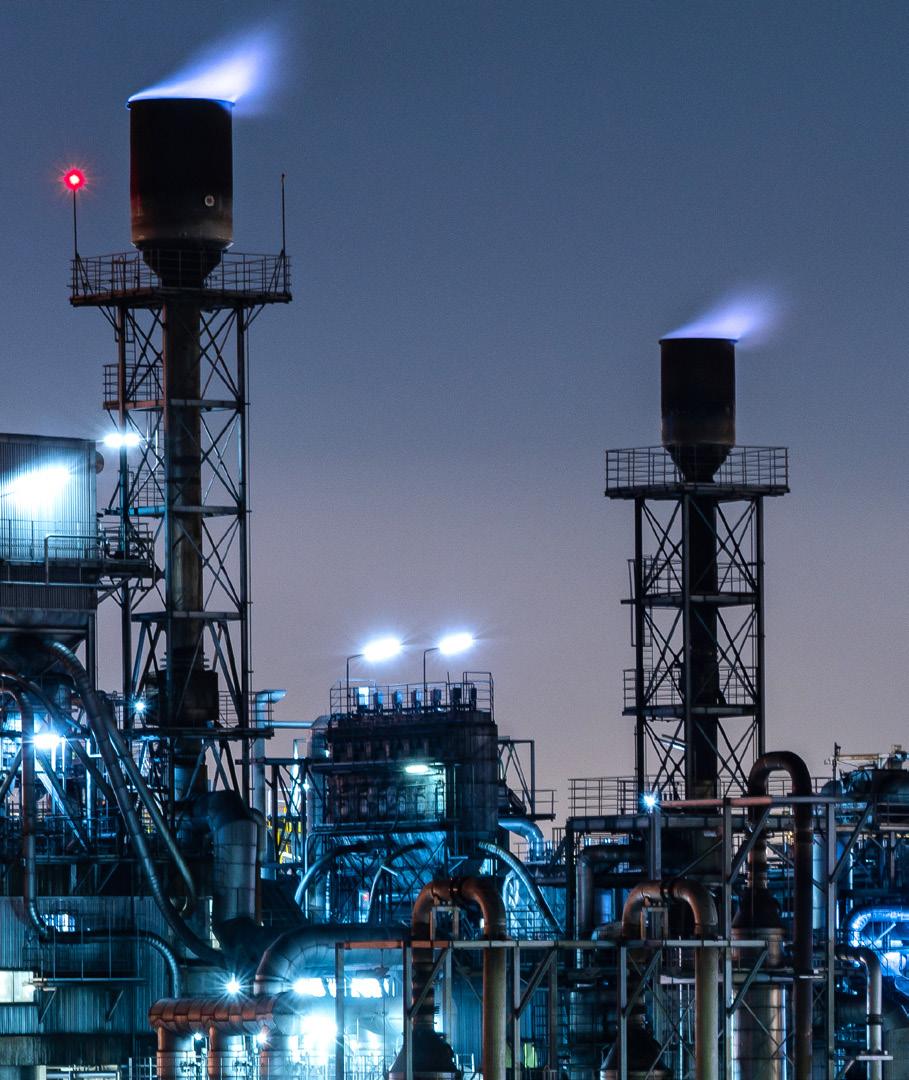
FOREIGN POLICY RESEARCH INSTITUTE 18
Russia’s gross domestic product will decline until sanctions are lifted. Even then, it cannot recover anytime soon to match the Chinese economic might giving Beijing a conventional military advantage over Moscow.
(Adobe Stock)
ENDNOTES
1 Anders Aslund, “Potemkin Putin,” Project Syndicate, March 3, 2021, https://www.projectsyndicate.rg/commentary/potemkin-putin-stagnant-economy-with-no-plan-by-andersaslund-2021-03.
2 Ibid.; Eugene Finkel, Janetta Azarieva, and Yitzhak Brudny, PONARS Eurasia, February 9, 2021, https://www.ponarseurasia.org/pasta-and-sugar-not-navalny-are-putins-main-worries/
3 “Russia: Corruption Perceptions Index,” Transparency International, https://www.transparency. org/en/cpi/2020/index/nzl; “Russia Has Lost $1 Trillion in Capital Flight Since Fall of U.S.S.R., Says Putin’s Economist,” Moscow Times, October 24, 2019, https://www.themoscowtimes. com/2019/10/24/russia-capital-outflow-trillion-ussr-putin-economist-a67891; Кризис-Копплка, Отток капитала из РФ бьет рекорды: де-факто утекают деньги ФНБ, June 12, 2020, https:// krizis-kopilka.ru/archives/77226; “Russia Sees Lowest Foreign Investment Since 1994,” Moscow Times, January 20, 2021, https://www.themoscowtimes.com/2021/01/20/russia-sees-lowestforeign-investment-since-1994-a72663
4 Jack Detsch, “Pentagon Deputy: Russia’s Defense Industry ‘Will Feel’ Pain of Ukraine War,” Foreign Policy, May 25, 2022, https://foreignpolicy.com/2022/05/25/pentagon-russia-defenseindustry-ukraine-war
5 Agathe Demarais, “Sanctions on Russia Are Working. Here’s Why,” Foreign Policy, December 1 2022, https://foreignpolicy.com/2022/12/01/ukraine-russia-sanctions-economy-war-putinembargo-technology-financial-energy/
6 Determining Russian (as well as Ukrainian) casualties in this war is an inexact science for open-source observers due to factors ranging from the normal fog of war to operational security observed by both sides but in this war exercised better by Ukraine. This estimate of over 100,000 casualties (killed-in-action, wounded-in-action, died-of-wounds, missing-in-action, prisoners-ofwar, accidental deaths and injuries, psychiatric casualties, illnesses, and deserters) is based on recent news reporting (“Over 90K ‘Irrecoverable Losses’ Suffered by Russian Soldiers in Ukraine: iStories,” Moscow Times, October 12, 2022, https://www.themoscowtimes.com/2022/10/12/ over-90k-irrecoverable-losses-suffered-by-russian-soldiers-in-ukraine-istories-a79070) using reportedly leaked Russian military data that as of early October the Russian military had suffered 90,000 “irrecoverable” military losses of dead, severely wounded, and missing-in-action. It does not count “regular” wounded nor other categories such as accidents and illnesses such as frostbite, trench foot, hypothermia, and other weather-related injuries known to be prevalent on the battlefield. Based on these factors, the author’s estimate that a month after his casualty figure was released, total Russian casualties for this war of all types as of November 1, 2022 are likely to have exceeded 100,000. This rough estimate by the author is also consistent with the remarks made by the Chairman of the Joint Chiefs of Staff, General Mark Miley, on November 9, 2022. See Dan Lamothe, Liz Sly, and Annabelle Timsit, “‘Well Over’ 100,000 Russian troops killed or wounded in Ukraine, U.S. says,” Washington Post, November 10, 2022, https://www. washingtonpost.com/world/2022/11/10/number-russian-troops-killed-injured-ukraine/
7 Mohammad Yousaf and Mark Adkin, Afghanistan-The Bear Trap, (Haverton, PA: Casemate, 1992), 6.
8 “Over 90K ‘Irrecoverable Losses’ Suffered by Russian Soldiers in Ukraine: iStories,” Moscow Times, October 12, 2022, https://www.themoscowtimes.com/2022/10/12/over-90k-irrecoverablelosses-suffered-by-russian-soldiers-in-ukraine-istories-a79070
FOREIGN POLICY RESEARCH INSTITUTE 20
9 Greg Miller and Catherine Belton, “Russia’s Spies Misread Ukraine and Misled Kremlin as War Loomed,” Washington Post, August 19, 2022, https://www.washingtonpost.com/world/ interactive/2022/russia-fsb-intelligence-ukraine-war/
10 Bruce Lincoln, Passage Through Armageddon: The Russians in War and Revolution 1914-1918 (New York: Simon and Schuster, 1986), 300.
11 Paul Goble, “Eurasia Daily Monitor: Influx of Russians Fleeing Mobilization Increasingly Alienating Central Asians,” Jamestown Foundation 19, no. 149, October 11, 2022, https:// jamestown.org/program/influx-of-russians-fleeing-moblization-increasingly-alienating-centralasians/.
12 Michael Wines, “New Study Supports Idea Stalin Was Poisoned,” New York Times, March 5, 2003, https://www.nytimes.com/2003/03/05/world/new-study-supports-idea-stalin-was-poisoned. html.
13 Roman Meitav, “Who is General ‘Armageddon,’ Russia’s new Ukraine war commander?,” The Jerusalem Post, October 12, 2022, https://www.jpost.com/international/article-719500.
14 Jared Gans, “Here Are the Russian Oil Executives Who Have Died in the Past Nine Months,” The Hill, September, 3, 2022, https://thehill.com/policy/international/3627413-here-are-therussian-oil-executives-who-have-died-in-the-past-nine-months/; Ivana Kottasova, “At Least Eight Russian Businessmen Have Died in Apparent Suicide or Accidents in Just Six Months,” CNN Business, September 2, 2022, https://cnn.com/2022/09/02/business/russian-oligarchs-deathsintl/index.html.
15 Roman Anin, “How Putin Decided About the War, iStories,” May 16, 2022, https://istories.media/ opinions/2022/05/16/kak-putin-prinyal-reshenie-o-voine/.
16 Mark Galeotti, “The Personal Politics of Putin’s Security Council Meeting,” Moscow Times, February 22, 2022, https://www.moscowtimes.com/2022/02/22/the-personal-politics-of-putinssecurity-council-meeting-a76522.
17 For more on coup-proofing, see James Quinlivan, “Coup-proofing: Its Practice and Consequences in the Middle East,” International Security 24, no. 2, (1999): 131–165.
18 Olga Romanova, “A Group of Armed Russian Soldiers Fled from Kherson to Ukraine,” Meduza, October 6, 2022, https://meduza.io/en/news/202210/06/a-group-of-armed-russian-soldiers-fledfrom-kherson-to-ukraine
19 Josephine Freund, “The North Caucasus: The Caspian Neighbors to the North and their Complicated Role in Russia’s War,” Caspian Policy Center, October 20, 2022, https://www. caspianpolicy.org/research/security-and-politics-program-spp/the-north-caucasus-the-caspianneighbors-to-the-north-and-their-complicated-role-in-russias-war?mc_cid=f38241f65b&mc_ eid=43b8961f24
2020, All-Russia Census of 2020, https://rosstat.gov.ru/ folder/56580.
(Abu Hamza: Appeal to Muslims of the North Caucasus: Time to Liberate the Caucasus),” Kavkazcenter.com, October 5, 2022, https://www.kavkazcenter.com/russ/ content/2022/10/05/121042/abu-khamza-obraschenie-k-musulmanam-severnogo-kavkazavremya-osvobodit-kavkaz.shtml; Sultan al-Kanj, “Chechen Fighters Leave Syria to Battle Russia in Ukraine,” Al-Monitor, October 22, 2022, https://ww.al-monitor.com/originals/2022/10/chechenfighters-leave-syria-battle-russians-ukraine
22 “Взгляд (Vzglyad), В США достали старые методички по развалу России (In the USA Are Old Manuals for the Fall of Russia),” July 21, 2022, https://vz.ru/politics/2022/7/21/1168626.html
WILL RUSSIA SURVIVE TO 2084? 21
Всероссийская перепись насиления
21 “Абу Хамза: Обращение к мусульманам Северного Кавказа:
Кавказ
20
Время Освободить
23 “Russia Wobbles in Support of Kazakhstan’s Territorial Integrity,” Eurasianet, February 4, 2017, https://eurasianet.org/russia-wobbles-in-support-kazakhstans-territorial-integrity; Alimana Zhanmukanova, “Is Northern Kazakhstan at Risk to Russia?,” The Diplomat, April 23, 2021, https:// thediplomat.com/2021/04/is-northern-kazakhstan-at-risk-to-russia/; Bruce Pannier, “An Old Refrain: Russian Lawmakers Question Kazakhstan’s Territorial Integrity, Statehood,” Radio Free Europe/Radio Liberty, December 16, 2020, https://www.rferl.org/a/russia-lawmakers-questionkazakhstan-territorial-integrity-statehood/31003732.html#:~:text=The%20greatest%20threat%20 from%20separatists%20that%20independent%20Kazakhstan,in%20the%20northeast%2C%20 calling%20for%20unification%20with%20Russia.
24 Lily Kuo, “China’s Xi Visits Central Asia Ahead of Expected Meeting with Putin,” Washington Post, September 14, 2022, https://www.washingtonpost.com/world/2022/09/14/china-xi-putinmeeting-kazakhstan-uzbekistan/.
25 John LeDonne, The Russian Empire and the World 1700-1917: The Geopolitics of Expansion and Containment (Oxford: Oxford University Press, 1997), 155–181.
26 LeDonne, pages 200–203; Michael Walker, The 1929 Sino-Soviet War: The War Nobody Knew (Lawrence, Kansas: University Press of Kansas, 2017); Peter Hopkirk, Setting the East Ablaze: On Secret Service in Bolshevik Asia (Oxford: Oxford University Press, 1984), pages 223–229.
27 Alvin Rubinstein and Nicolai Petro, Russian Foreign Policy: From Empire to Nation-State (New York: Longman, 1997), 193.
28 ROSSTAT, Всероссийская перепись населения 2010 года. Том 1.
29 World Economic Outlook Database, International Monetary Fund, April 2021, IMF.org.
30 2022 Report on Military and Security Developments Involving the People's Republic of China, Defense Department, November 29, 2022, https://www.defense.gov/CMPR/
FOREIGN POLICY RESEARCH INSTITUTE 22
The Foreign Policy Research Institute (FPRI) is a nonpartisan Philadelphia-based think tank dedicated to strengthening U.S. national security and improving American foreign policy. FPRI conducts in-depth research to find new information about U.S. foreign policy challenges and provide insightful analysis that is evidence-driven, policy- relevant, and nonpartisan. We produce research reports, articles, and summary briefs tailored to the needs of different audiences. We host public events and private briefings to make our findings as accessible as possible and to ensure the information we uncover reaches the American people and the policymakers who need it most.
www.fpri.org
ABOUT THE AUTHOR
Philip Wasielewski is a 2022 Templeton Fellow at the Foreign Policy Research Insitute and a former Paramilitary Case Officer who had a 31-year career in the Directorate of Operations of the Central Intelligence Agency. He was a member of the first CIA team into Afghanistan in 2001 and served a three-year assignment on the National Security Council staff as the Director for Intelligence and Covert Action programs. His CIA career was paralleled by a concurrent 30-year Marine Corps career (7 years active duty and 23 reserve) as an infantry officer including mobilizations for Afghanistan and Iraq. Philip Wasielewski graduated from the University of Pennsylvania in 1983 with a B.A. in International Relations and European History. He also has an M.A. from Harvard's Davis Center for Russian Studies and an M.A. in National Security Studies from the Army War College.
WILL RUSSIA SURVIVE TO 2084? 23
POLICY RESEARCH INSTITUTE
The Foreign Policy Research Institute is dedicated to producing the highest quality scholarship and nonpartisan policy analysis focused on crucial foreign policy and national security challenges facing the United States. We educate those who make and influence policy, as well as the public at large, through the lens of history, geography, and culture.
Foreign Policy Research Institute
123 S. Broad St, Suite 1920 Philadelphia, PA 19109 215-732-3774 www.fpri.org Follow us @FPRI
FOREIGN

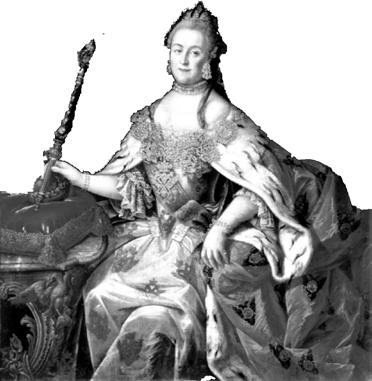
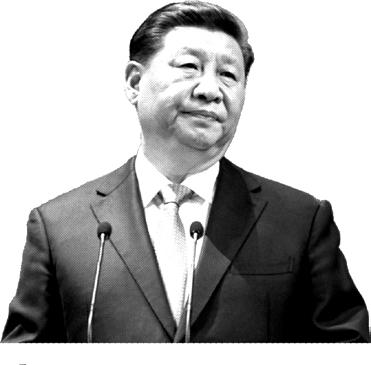
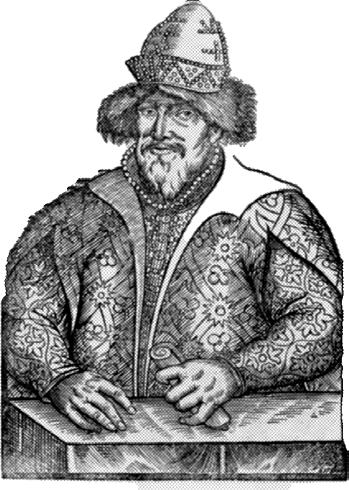
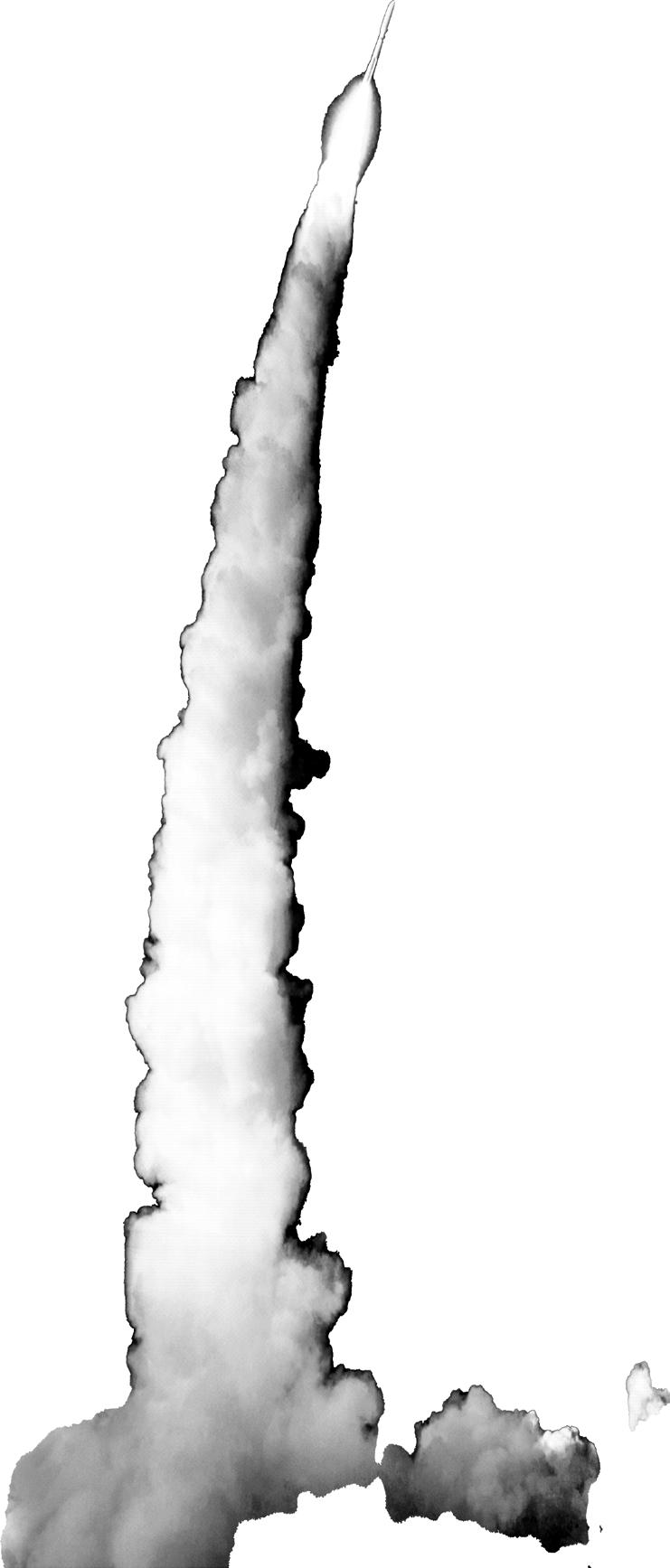

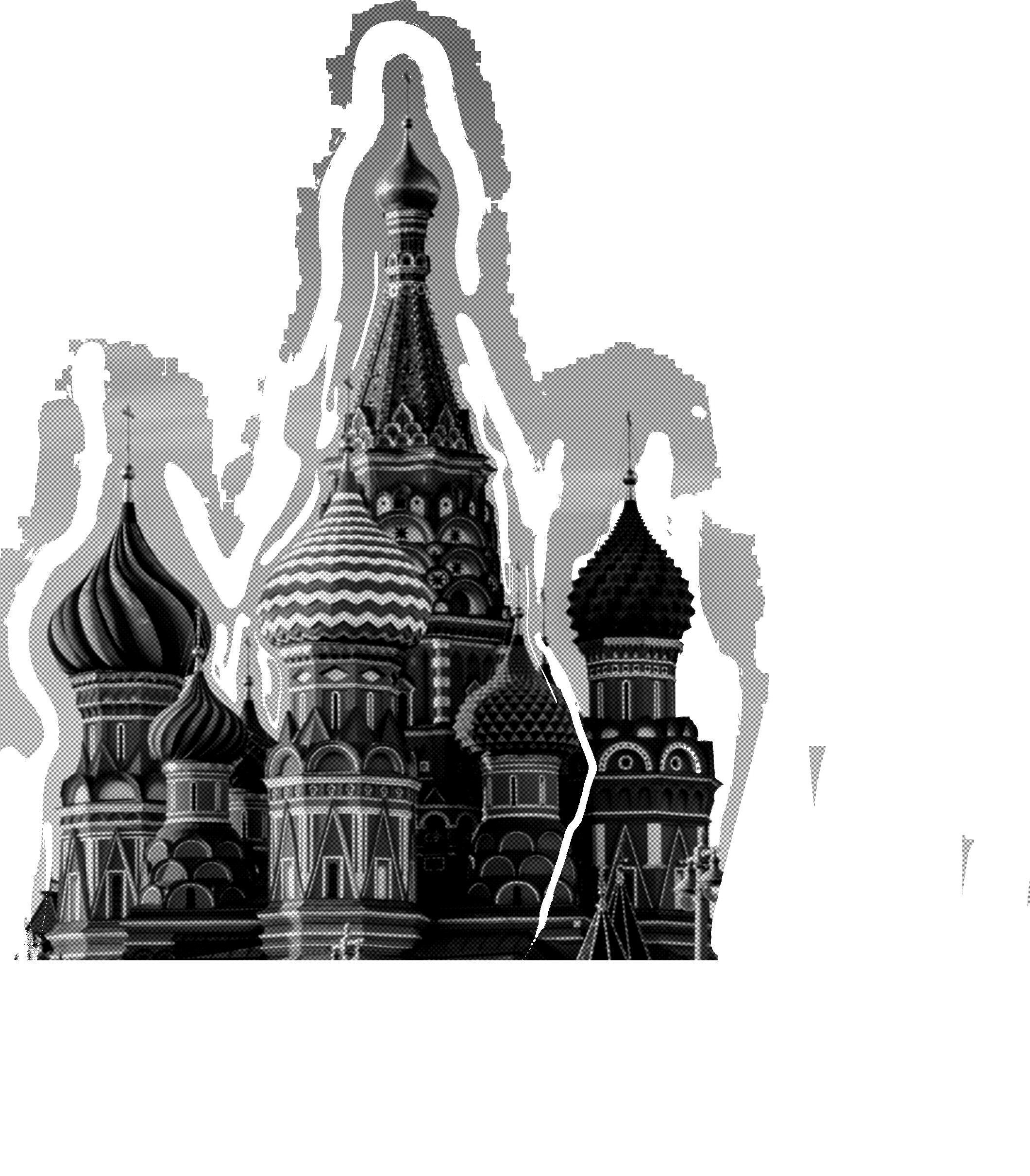



 Fixing of Ukrainian flag on Snake Island, July 7, 2022. (State Border Guard Service of Ukraine/Facebook)
Fixing of Ukrainian flag on Snake Island, July 7, 2022. (State Border Guard Service of Ukraine/Facebook)
 Speech by Russian President Vladimir Putin at a rally in Manezhnaya square after winning the election in 2018. (kremlin.ru)
Speech by Russian President Vladimir Putin at a rally in Manezhnaya square after winning the election in 2018. (kremlin.ru)
 Working meeting of Russian President Vladimir Putin with the Head of the Chechen Republic Ramzan Kadyrov in 2018. (kremlin.ru)
Working meeting of Russian President Vladimir Putin with the Head of the Chechen Republic Ramzan Kadyrov in 2018. (kremlin.ru)
 President of Kazakhstan Kassym-Jomart Tokayev held talks with Chinese President XI Jinping in 2019. (akorda.kz)
President of Kazakhstan Kassym-Jomart Tokayev held talks with Chinese President XI Jinping in 2019. (akorda.kz)

